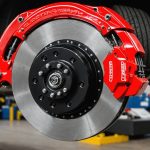As the winter months approach, many of you might be considering tucking away your prized vehicle until the warmth of spring returns. Proper storage is not just about parking your car in the garage and forgetting about it until the flowers bloom again. It involves thoughtful planning and diligent preparation to ensure your car remains in pristine condition. Neglecting these practices can lead to unexpected maintenance issues or costly repairs when it’s time to hit the road again. In this article, we’ll guide you through the best practices for storing your car during the off-season, ensuring a smooth transition from storage to springtime cruising.
Preparing Your Vehicle for Winter Storage
To ensure your vehicle remains in top condition during the off-season, preparation is key. Winter storage involves more than just parking your car. It’s about taking steps to prevent potential damage that could occur while your car remains idle.
Topic to read : Essential Steps to Guarantee Your Modified Car Meets UK Emissions Standards
Clean and Protect your Car
Before storing your vehicle, it’s crucial to give it a thorough cleaning. This may seem like a basic step, but residual dirt or grime can cause long-term damage to the paint and finish of your car. Once cleaned, consider applying a protective wax to the exterior to add a layer of protection against dust and moisture. Inside, ensure all trash and personal items are removed to prevent unpleasant odors or pest infestations.
Check and Change Fluids
Ensure all essential fluids — including oil, coolant, and brake fluid — are topped off or changed. Fresh oil prevents sediment build-up, which can cause damage to the engine when the car is started after a long period of inactivity. Proper fluids maintenance is crucial to preventing rust and corrosion.
In parallel : How can you detect and address common signs of wear and tear in your vehicle?
Tires and Battery Care
Inflate your tires to the recommended pressure level to avoid flat spots forming during prolonged storage. A flat spot occurs when a tire has been in the same position for a long time, which can lead to permanent damage.
Consider removing the battery and storing it in a cool, dry place. Alternatively, using a battery maintainer can help keep the battery charged and ready for use. Without these precautions, you might find yourself dealing with a dead battery come spring.
Choosing the Right Storage Location
Your choice of storage location can significantly impact the condition of your car over the winter months. Whether you opt for a home garage or a professional storage facility, understanding the benefits and limitations of each option is crucial.
Home Garage Storage
Storing your vehicle in a home garage is a convenient and cost-effective option for many. Ensure that your garage is clean and dry, as moisture can lead to rust and mold. If your garage tends to be damp, consider investing in a dehumidifier or moisture absorber.
Professional Storage Facilities
For those without a suitable home garage, professional storage facilities offer a secure and climate-controlled environment for your vehicle. These facilities often provide added benefits such as regular maintenance checks and pest control. Although more expensive, this option can provide peace of mind that your car is under constant care.
Additional Protective Measures
Regardless of where you store your car, utilizing a high-quality car cover can provide an extra layer of protection against dust and environmental factors. Ensure the cover is breathable to prevent moisture build-up underneath.
Choosing the right storage location is essential for preventing potential damage and ensuring your car remains in excellent condition throughout the off-season.
Handling Fuel and Engine Concerns
Fuel management is a critical aspect of preparing your car for long-term storage. Improper handling of fuel can lead to serious issues down the road, including engine troubles and reduced performance.
Fuel Stabilization
When storing your car for an extended period, adding a fuel stabilizer to the gas tank is essential. This product prevents the fuel from degrading over time, which can lead to clogged fuel lines and a difficult start when the vehicle is ready to be used again.
Engine Maintenance
Running the engine for a few minutes every couple of weeks can prevent the internal components from seizing. This simple act helps circulate oil throughout the engine and keeps the battery charged. However, ensure this is done in a well-ventilated area to prevent the build-up of harmful fumes.
Avoiding Rodent Trouble
Keeping rodents and pests at bay is another challenge during car storage. These critters can cause significant damage, particularly to the engine bay and wiring. Consider placing mothballs or peppermint oil near the vehicle, as these are known deterrents. Inspect the car regularly to ensure there are no signs of animal intrusion.
By addressing fuel and engine concerns from the outset, you ensure that your vehicle remains ready and operational when needed.
Reawakening Your Vehicle in the Spring
As winter finally gives way to warmer days, it’s time to bring your vehicle out of hibernation. However, rushing to start it without proper checks can undo all your careful preparation.
Initial Inspection
Begin with a thorough inspection of your vehicle. Check for any signs of leaks, damages, or pest infestations that may have occurred during storage. Pay close attention to areas that are often overlooked, such as the undercarriage and wheel wells.
Tire Care
Before driving, ensure your tires are properly inflated and haven’t developed flat spots. If your tires were sitting on the ground all winter, consider rotating them to distribute the wear evenly before hitting the open road.
Check Battery and Fluids
Reconnect the battery if it was removed, or remove the charger if you used a maintainer. Check all fluid levels and top them off if necessary. This includes oil, coolant, and brake fluid to ensure your vehicle operates smoothly.
First Start and Test Drive
Once everything checks out, it’s time for the first start. Allow the engine to idle for a few minutes to circulate the fluids and warm up. Take the car for a short test drive to ensure brakes, transmission, and other systems are functioning correctly.
By following these steps, you ensure that your vehicle is ready for another season of driving without any unforeseen hiccups.
Storing your car during the off-season doesn’t have to be a daunting task if you follow these best practices. From cleaning and protecting your vehicle to choosing the right storage location and managing fuel and engine maintenance effectively, each step plays a crucial role in maintaining your car’s condition. By preparing properly, you avoid potential issues and ensure that when the time comes, your car is ready to provide you with the enjoyable driving experience you’ve come to expect. Remember, the key to successful vehicle storage is not just what you do before, but also how you handle the reawakening process in the spring. Follow these guidelines, and you’re sure to keep your vehicle in pristine condition, ready for the road ahead.











